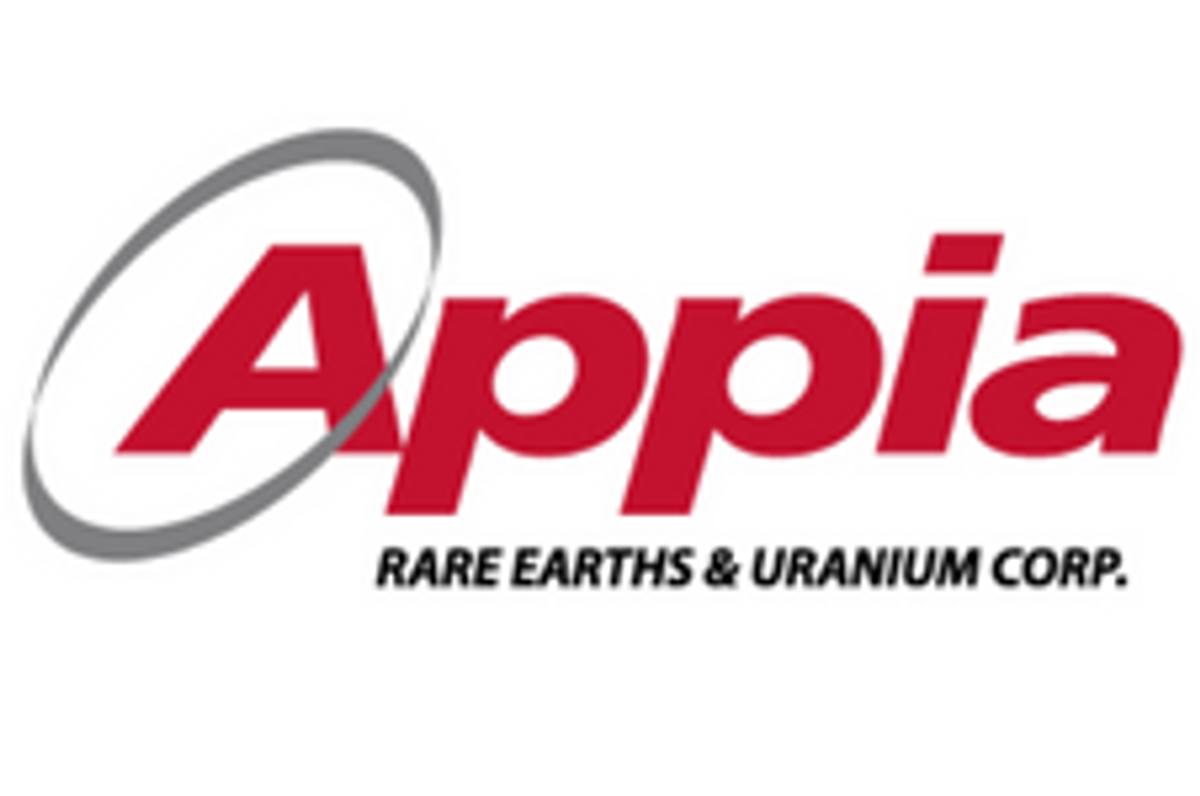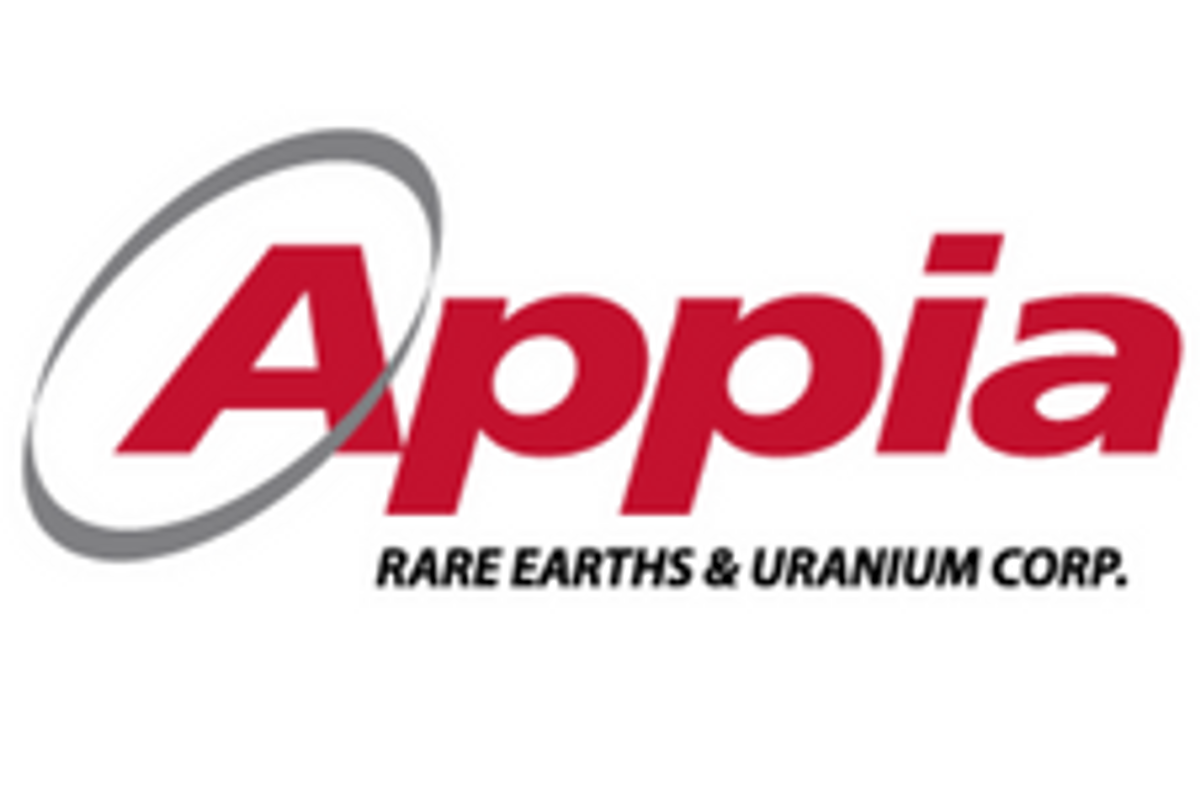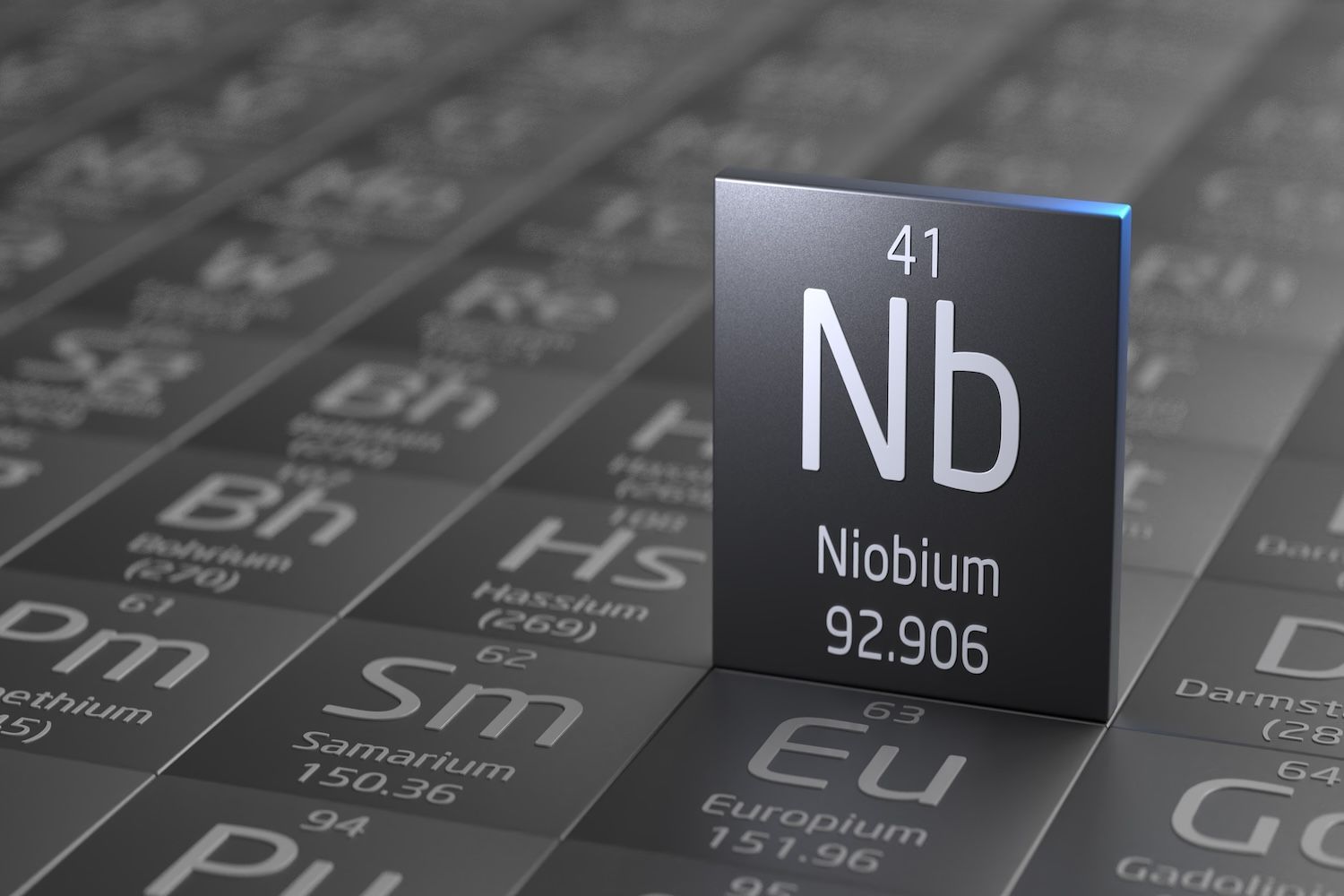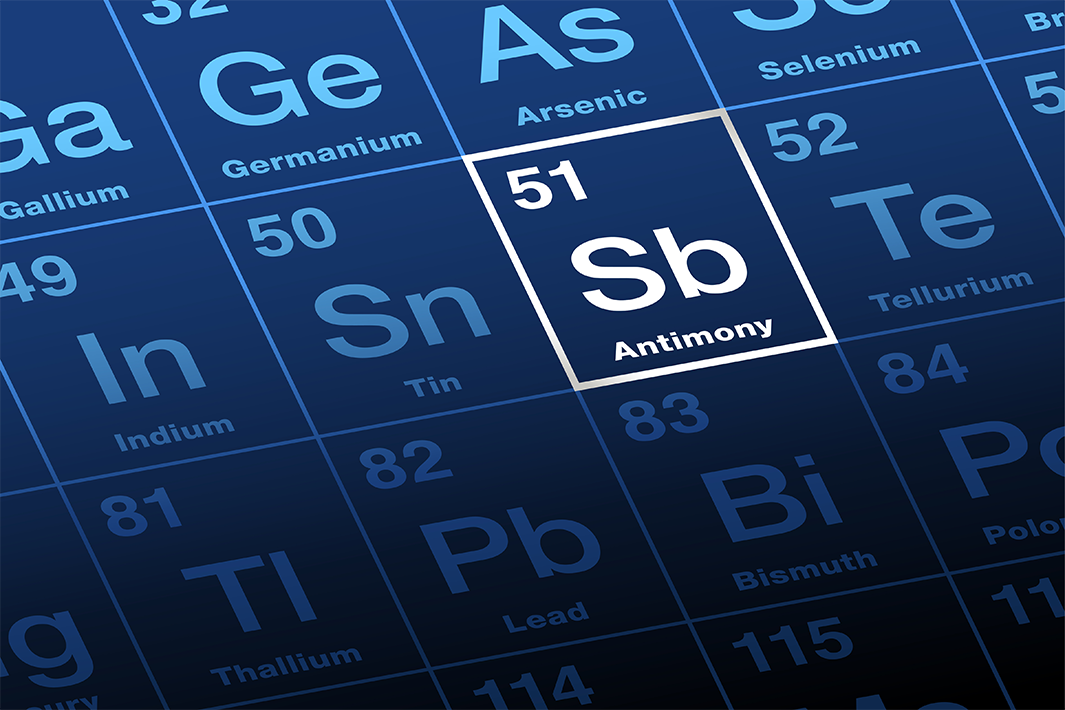
Appia Rare Earths & Uranium Corp. (CSE: API) (OTCQX: APAAF) (FSE: A0I0) (MUN: A0I0) (BER: A0I0) (the "Company" or "Appia") announced today the results from 2 newly identified exploration targets - Electra and Maia. A total of 196 samples from 25 auger drill holes were assayed by SGS-GEOSOL Laboratories in Vespasiano, Brazil. The results confirm again that the regolith developed over the Ipora Granite presented significant enrichment of Heavy Rare Earth Oxides (HREO), indicative of the Ionic Adsorption Clay (IAC) rare earth elements (REE) deposits similar to the Target IV zone already identified as IAC REE. This will be confirmed by the desorption analysis which is currently underway.
Stephen Burega, President, commented, "Appia's geology team continues to identify significant new target zones at the PCH project, and further our understanding of the IAC mineralization across the overall project area. The impressive HREO results now identified across multiple zones of homogeneous mineralization highlights the true potential of the PCH project. We are very pleased with what we have accomplished to date and are moving quickly to our next phase of definition drilling, and the commissioning of a Preliminary Economic Assessment (PEA) report including the expansion of the existing maiden Mineral Resource Estimate. Management is working on many fronts to build strong industry linkages and participate in international forums to support the next phase of project development."
Highlights
The new targets are in the Central and Mid-western portion grouping of claims, Maia is located approximately 7 km east-northeast from Target IV, and Electra 5 km north-northeast from Target IV (see Figure 1).
-
Selected intercepts for Heavy Rare Earth Oxide (HREO), Total Rare Earth Oxide (TREO), Dysprosium plus Terbium oxides (Dy+Tb) and Praseodymium plus Neodymium oxides (Nd+Pr) grades in Parts Per Millions (ppm):
PCH-AH-036 - 5m@1646ppm TREO, 381ppm HREO, 53ppm Dy+Tb, 416ppm Nd+Pr from 5m.
PCH-AH-042 - 3m@1120ppm TREO, 155ppm HREO, 24ppm Dy+Tb, 225ppm Nd+Pr from 5m.
PCH-AH-044 - 4m@980ppm TREO, 127ppm HREO, 18ppm Dy+Tb, 199ppm Nd+Pr from 3m.
PCH-AH-094 - 4m@1054ppm TREO, 327ppm HREO, 37ppm Dy+Tb, 169ppm Nd+Pr from 3m.
PCH-AH-105 - 4m@1041ppm TREO, 207ppm HREO, 27ppm Dy+Tb, 181ppm Nd+Pr from 6m.
PCH-AH-177 - 1m@1067ppm TREO, 245ppm HREO, 32ppm Dy+Tb, 163ppm Nd+Pr from 7m.
PCH-AH-178 - 1m@1462ppm TREO, 177ppm HREO, 25ppm Dy+Tb, 233ppm Nd+Pr from 4m.
PCH-AH-179 - 2m@1490ppm TREO, 187ppm HREO, 26ppm Dy+Tb, 310ppm Nd+Pr from 3m.
PCH-AH-180 - 4m@1645ppm TREO, 174ppm HREO, 24ppm Dy+Tb, 340ppm Nd+Pr from 1m.
PCH-AH-181 - 3m@1174ppm TREO, 199ppm HREO, 27ppm Dy+Tb, 195ppm Nd+Pr from 3m.
PCH-AH-182 - 3m@918ppm TREO, 188ppm HREO, 25ppm Dy+Tb, 207ppm Nd+Pr from 2m.
PCH-AH-183 - 6m@1133ppm TREO, 150ppm HREO, 20ppm Dy+Tb, 209ppm Nd+Pr from 1m.
PCH-AH-184 - 4m@1350ppm TREO, 182ppm HREO, 30ppm Dy+Tb, 298ppm Nd+Pr from 3m.
PCH-AH-188 - 4m@1494ppm TREO, 175ppm HREO, 24ppm Dy+Tb, 308ppm Nd+Pr from 4m.
PCH-AH-189 - 6m@1427ppm TREO, 261ppm HREO, 34ppm Dy+Tb, 271ppm Nd+Pr from 2m.
The grade distribution signature found at depth in the auger drill holes is comparable with the pattern commonly found on IAC REE deposits (see Figures 3, 4, 5 and 6).
The Electra and Maia targets cover an area of 395 and 321 hectares respectively. Currently, the four new target zones (Merope, Taygeta, Maia and Electra) equal approximately 2,400 hectares in total area (Figure 2). In comparison, the Target IV and Buriti zones, where Appia's maiden Mineral Resource Estimate (MRE) was calculated, equal a total area of 483 hectares.
These first phase auger drill holes average 7.84 metres in depth, and the majority of drill holes ended in mineralization leaving the interval open at depth.
Intercepts of all auger drill holes are presented in Table 1. The full set of results are included in this LINK.
Andre Costa, VP Exploration for Brazil, commented, "Once again we are seeing well-developed zones with the same lithological development and distribution of REE mineralization within the regolith associated with the weathered Ipora Granite that underlays a majority of the PCH project area. A representative group of samples from the Maia and Electra zones are being prepared for desorption analysis. Meanwhile, our ground-crews continued to delineate new targets zones and auger drill testing will ensue across the +40,000-hectare property. To date, Appia has only tested approximately 30% of the total project area."
On March 1st, 2024, the Company announced its maiden Mineral Resource Estimate (MRE) on Target IV and the Buriti Zone (Click here for the Press Release), and the companion NI 43-101 technical report on the PCH Project was filed on April 16th, 2024. (Click here for the Press Release)
| Hole ID | From | To | Length | TREO | HREO | Dy+Tb Oxides | Nd+Pr Oxides | Target |
| metre | metre | metre | ppm | ppm | ppm | ppm | ||
| PCH-AH-036 | 5 | 10 | 5 | 1646 | 381 | 53 | 416 | MAIA |
| PCH-AH-042 | 5 | 8 | 3 | 1120 | 155 | 24 | 225 | MAIA |
| PCH-AH-044 | 3 | 7 | 4 | 980 | 127 | 18 | 199 | MAIA |
| PCH-AH-088 | 6 | 7 | 1 | 814 | 142 | 20 | 146 | MAIA |
| PCH-AH-089 | 1 | 2 | 1 | 618 | 118 | 17 | 119 | MAIA |
| PCH-AH-090 | 6 | 10 | 4 | 622 | 120 | 16 | 145 | MAIA |
| PCH-AH-092 | 3 | 5 | 2 | 693 | 201 | 24 | 116 | MAIA |
| PCH-AH-093 | 6 | 7 | 1 | 600 | 121 | 17 | 96 | MAIA |
| PCH-AH-094 | 3 | 7 | 4 | 1054 | 327 | 37 | 169 | MAIA |
| PCH-AH-097 | 3 | 7 | 4 | 862 | 236 | 31 | 170 | MAIA |
| PCH-AH-098 | 6 | 10 | 4 | 927 | 190 | 25 | 144 | MAIA |
| PCH-AH-099 | 5 | 6 | 1 | 906 | 196 | 28 | 222 | MAIA |
| PCH-AH-105 | 6 | 10 | 4 | 1041 | 207 | 27 | 181 | MAIA |
| PCH-AH-171 | 5 | 6 | 1 | 916 | 156 | 23 | 222 | MAIA |
| PCH-AH-176 | 7 | 8 | 1 | 929 | 181 | 24 | 110 | MAIA |
| PCH-AH-177 | 7 | 8 | 1 | 1067 | 245 | 32 | 163 | MAIA |
| PCH-AH-178 | 4 | 5 | 1 | 1462 | 177 | 25 | 233 | MAIA |
| PCH-AH-179 | 3 | 5 | 2 | 1490 | 187 | 26 | 310 | MAIA |
| PCH-AH-180 | 1 | 5 | 4 | 1645 | 174 | 24 | 340 | ELECTRA |
| PCH-AH-181 | 3 | 6 | 3 | 1174 | 199 | 27 | 195 | ELECTRA |
| PCH-AH-182 | 2 | 5 | 3 | 918 | 188 | 25 | 207 | ELECTRA |
| PCH-AH-183 | 1 | 7 | 6 | 1133 | 150 | 20 | 209 | ELECTRA |
| PCH-AH-184 | 3 | 7 | 4 | 1350 | 182 | 30 | 298 | ELECTRA |
| PCH-AH-188 | 4 | 8 | 4 | 1494 | 175 | 24 | 308 | ELECTRA |
| PCH-AH-189 | 2 | 8 | 6 | 1427 | 261 | 34 | 271 | ELECTRA |
Table 1 - Intercepts from all auger holes on targets Maia and Electra. For a full list of results, please click here.
*Total Rare Earth Oxides: TREO = Y2O3 + Eu2O3 + Gd2O3 + Tb4O7 + Dy2O3 + Ho2O3 + Er2O3 + Tm2O3 + Yb2O3 + Lu2O3 + La2O3 + Ce2O3 + Pr2O3 + Nd2O3 + Sm2O3
*Heavy Rare Earth Oxides: HREO = Gd2O3 + Tb4O7 + Dy2O3 + Ho2O3 + Er2O3 + Tm2O3 + Yb2O3 + Lu2O3 + Y2O3
*Nd+Pr Oxides= Nd2O3+Pr2O3
*Dy+Tb Oxides= Dy2O3+Tb4O7
*Element to Oxide Conversion Factor - Cerium Ce2O3 1.1713, Cerium CeO2 1.2284, Dysprosium Dy2O3 1.1477, Erbium Er2O3 1.1435, Europium Eu2O3 1.1579, Gadolinium Gd2O3 1.1526, Holmium Ho2O3 1.1455, Lanthanum La2O3 1.1728, Lutetium Lu2O3 1.1371, Neodymium Nd2O3 1.1664, Praseodymium Pr2O3 1.1703, Praseodymium Pr6O11 1.2082, Samarium Sm2O3 1.1596, Terbium Tb2O3 1.1510, Terbium Tb4O7 1.1762, Thulium Tm2O3 1.1421, Yttrium Y2O3 1.2699, Ytterbium Yb2O3 1.1387
Figure 1 - Map of exploration auger drill hole locations and outlines Maia and Electra targets zones.
To view an enhanced version of this graphic, please visit:
https://images.newsfilecorp.com/files/5416/210042_0c231e62c4099896_001full.jpg
Figure 2 - Map presenting all new targets identified in PCH and MRE Target IV and Buriti.
To view an enhanced version of this graphic, please visit:
https://images.newsfilecorp.com/files/5416/210042_0c231e62c4099896_002full.jpg
Figure 3 - Strip logs of selected auger holes from Electra Target.
To view an enhanced version of this graphic, please visit:
https://images.newsfilecorp.com/files/5416/210042_0c231e62c4099896_003full.jpg
Figure 4 - Strip logs of selected auger holes from Electra Target (continuation).
To view an enhanced version of this graphic, please visit:
https://images.newsfilecorp.com/files/5416/210042_0c231e62c4099896_004full.jpg
Figure 5 - Strip logs of selected auger holes from Maia Target.
To view an enhanced version of this graphic, please visit:
https://images.newsfilecorp.com/files/5416/210042_0c231e62c4099896_005full.jpg
Figure 6 - Strip logs of selected auger holes from Maia Target (continuation).
To view an enhanced version of this graphic, please visit:
https://images.newsfilecorp.com/files/5416/210042_0c231e62c4099896_006full.jpg
QA/QC
Auger drill holes are vertical and reported intervals are true thickness. The material produced from drill holes are sampled at one metre intervals, resulting in average sample sizes of 5-10 kg. Quartering of the material was performed at Appia's logging facility using a riffle splitter and continued splitting until a representative sample weighing approximately 500g each was obtained, bagged in a resistant plastic bag, labeled, photographed, and stored for shipment.
The bagged samples are sent to the SGS laboratory in Vespasiano, Minas Gerais. In addition to the internal QA/QC of the SGS Lab, Appia includes its own control samples in each batch of samples sent to the laboratory.
Quality control samples, such as blanks, duplicates, and standards (CRM) were inserted into each analytical run. For all analysis methods, the minimum number of QA/QC samples is one standard, one duplicate and one blank, introduced in each batch which comprise a full-length hole. The rigorous procedures are implemented during the sample collection, preparation, and analytical stages to insure the robustness and reliability of the analytical results.
All analytical results reported herein have passed internal QA/QC review and compilation. All assay results of Auger samples were provided by SGS Geosol, an ISO/IEC 17025:2005 Certified Laboratory, which performed their measure of the concentration of rare earth elements (REE) with the IMS95R analytical method that uses lithium metaborate fusion prior acid dissolution and Inductively Coupled Plasma Mass Spectrometry (ICP-MS).
The technical information in this news release, including the information related to geology, drilling, and mineralization, has been reviewed and approved by Andre L. L. Costa Appia's VP Exploration for Brazil, with more than 29 years of relevant experience. Mr. Costa is a Fellow of Australian Institute of Geoscientists (AIG) and is a Qualified Person (QP) as defined by National Instrument 43-101 - Standards of Disclosure for Mineral Projects.
About Appia Rare Earths & Uranium Corp. (Appia)
Appia is a publicly traded Canadian company in the rare earth element and uranium sectors. The Company holds the right to acquire up to a 70% interest in the PCH Ionic Adsorption Clay Project (See June 9th, 2023 Press Release - Click HERE) which is 40,963.18 ha. in size and located within the Goiás State of Brazil. (See January 11th, 2024 Press Release - Click HERE) The Company is also focusing on delineating high-grade critical rare earth elements and gallium on the Alces Lake property, and exploring for high-grade uranium in the prolific Athabasca Basin on its Otherside, Loranger, North Wollaston, and Eastside properties. The Company holds the surface rights to exploration for 94,982.39 hectares (234,706.59 acres) in Saskatchewan. The Company also has a 100% interest in 13,008 hectares (32,143 acres), with rare earth elements and uranium deposits over five mineralized zones in the Elliot Lake Camp, Ontario.
Appia has 136.3 million common shares outstanding, 145 million shares fully diluted.
Cautionary note regarding forward-looking statements: This News Release contains forward-looking statements which are typically preceded by, followed by or including the words "believes", "expects", "anticipates", "estimates", "intends", "plans" or similar expressions. Forward-looking statements are not a guarantee of future performance as they involve risks, uncertainties and assumptions. We do not intend and do not assume any obligation to update these forward-looking statements and shareholders are cautioned not to put undue reliance on such statements.
Neither the Canadian Securities Exchange nor its Market Regulator (as that term is defined in the policies of the CSE) accepts responsibility for the adequacy or accuracy of this release.
For more information, visit www.appiareu.com.
As part of our ongoing effort to keep investors, interested parties and stakeholders updated, we have several communication portals. If you have any questions online (X, Facebook, LinkedIn) please feel free to send direct messages.
To book a one-on-one 30-minute Zoom video call, please click here.
Contact:
Tom Drivas, CEO and Director
(c) (416) 876-3957
(e) tdrivas@appiareu.com
Stephen Burega, President
(c) (647) 515-3734
(e) sburega@appiareu.com
To view the source version of this press release, please visit https://www.newsfilecorp.com/release/210042









